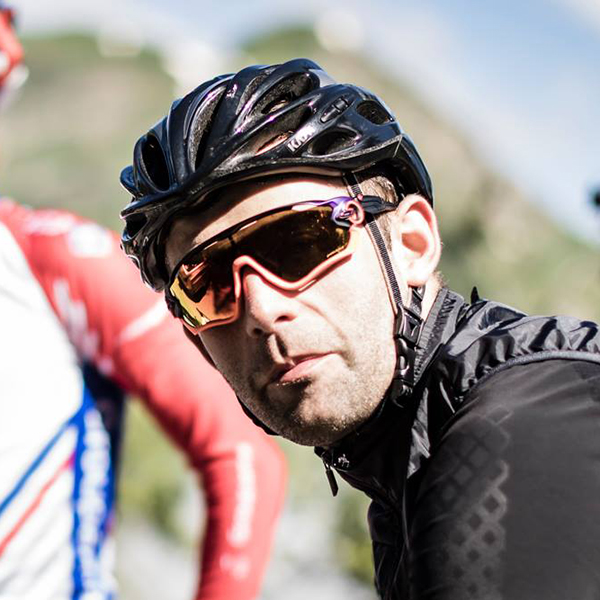The Look 795 Blade RS was unveiled at Eurobike 2023, accompanied by claims of improved aerodynamics, reduced weight and increased stiffness.
The bike is raced in the WorldTour by Team Cofidis (subject to sponsor-correct builds), reflecting its all-round race bike ethos – the team rarely uses the brand’s lightweight bike, the 785 Huez.
The spec on test here is pro-level, and in keeping with the bike’s speed-oriented goals.
There’s lots to admire about the latest 795 Blade RS. I’ve been struck by how fast and efficient it feels both on the flat and when climbing, and the handling is excellent. It feels light and responsive, making it ideal for those who take confidence from agile behaviour.
That said, while the new 795 Blade RS is lighter than its predecessor, it still has a formidably rigid quality that some may struggle with.
Look 795 Blade RS (Dura-Ace Di2) frameset

The Look 795 Blade RS frameset uses a blend of the brand’s high and ultra-high modulus carbon.
The French brand claims this results in a frame weight of 890g (in a size small), with an additional 435g for the fork.
Compared to the previous 795 Blade RS, the frameset is said to be 7 per cent stiffer and 10 per cent more aerodynamic.
Where the previous version had a downward-curving top tube, which flowed into the seatstays, and deeper-section down and seat tubes, the latest frame has a more angular, truncated appearance, with dropped seatstays.

The seatstays have prominent horizontal shoulders before angling backwards, while Look says it has modified the seatpost clamp assembly, bottle cage positioning and fork profile to aid aerodynamics.
The integrated two-piece Combo Aero cockpit and proprietary D-shaped Aero Post 4 seatpost have also been aerodynamically optimised.
The fork uses a standard round 1-1/8in steerer (covered by a cap to create a smooth interface with the standard cockpit), which means the bike can sport a wide range of aftermarket bars and stems.
This is a boon for those with specific fit requirements, but there may be an aerodynamic cost to doing so – Look says its cockpit saves the rider five watts compared to the previous bike’s handlebar, though it doesn’t specify at what speed this was measured.
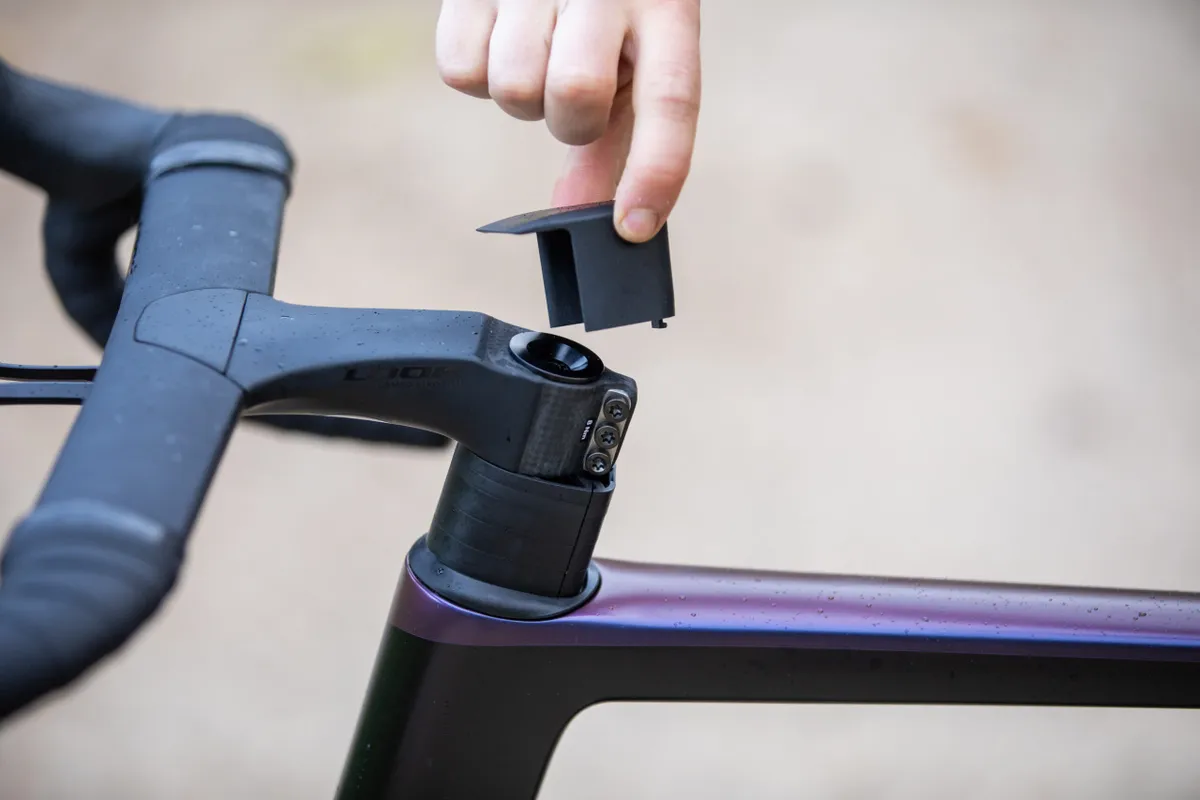
That said, Look offers the stem in seven lengths (80-140mm) and the handlebar in four widths (38-44cm, centre to centre), and these can be specified at point of purchase.
Those with aerodynamic efficiency at the front of their mind, therefore, might be best served by going narrower to minimise their frontal surface area (bike fit requirements permitting).
The bike employs a T47 threaded bottom bracket, while Look says the frameset can fit up to 700x32c tyres – contemporarily spacious, but outstripped by the Cervélo S5 (at 34mm).
Look 795 Blade RS (Dura-Ace Di2) geometry

In a size large as tested, the Look 795 Blade RS frame sports a 400mm reach and 577mm stack.
Compared to a size 56cm Specialized S-Works Tarmac SL8, for example, it’s 5mm longer and 12mm taller – slightly larger, but similarly aggressive.
Meanwhile, the 73-degree head angle is race-bike steep (albeit 0.5 degrees slacker than the Tarmac SL8), while the seat tube angle is a notably steep 74.5 degrees (a full degree more upright than the latest Tarmac).
In theory, the front end should hold no surprises – it’s designed steep enough to elicit sharp handling on paper, but not so steep as to feel twitchy.
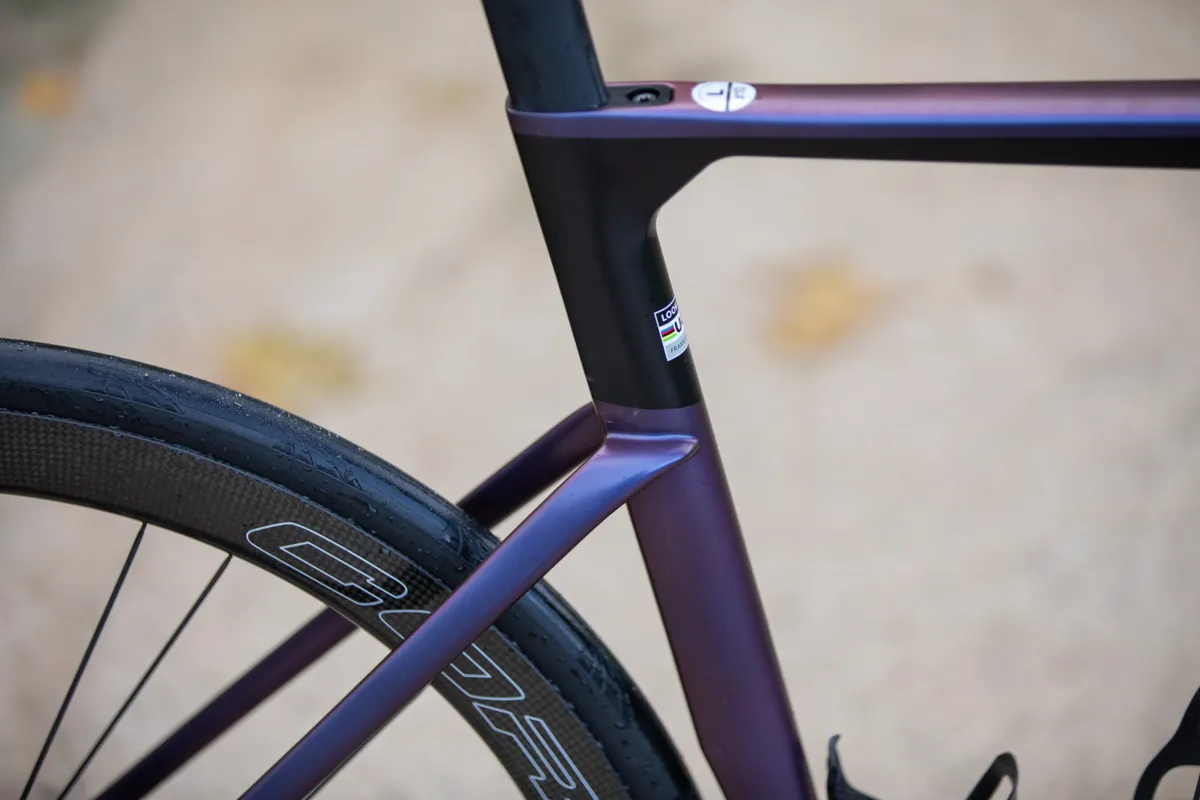
The fork rake is 43mm, 1mm shorter than the Tarmac, resulting in a trail of 59.3mm (4.3mm more than the Specialized) when the axle-to-crown measurements are taken into account. This pushes the contact patch of a given front tyre forward, which in turn should calm front-end handling.
The very steep seat tube angle, though, is reflective of Look’s intention to pitch the rider over the cranks, opening the hip angle for improved power transfer.
This felt natural when paired with the 20mm setback seatpost – I normally prefer an inline seatpost, given the choice, on bikes with slacker seat tube angles.
Look’s policy of allowing some component swaps from the get-go plays in its favour here in terms of fit, compared to Specialized's less-committal stance (where it’s left up to individual dealers to decide).
That said, the 795 Blade RS is available in ‘only’ five sizes, compared to the Tarmac’s seven.
| | XS | S | M | L | XL |
|---|---|---|---|---|---|
| Seat tube angle (degrees) | 74.5 | 74.5 | 74.5 | 74.5 | 74.5 |
| Head tube angle (degrees) | 71.75 | 71.75 | 73 | 73 | 73 |
| Chainstay (mm) | 410 | 410 | 410 | 410 | 410 |
| Seat tube (mm) | 478.3 | 504.4 | 529 | 554.8 | 579.6 |
| Top tube (mm) | 510 | 526.7 | 543.4 | 560 | 576.7 |
| Head tube (mm) | 90.4 | 115.6 | 136.7 | 161.8 | 189.5 |
| Fork offset (mm) | 50 | 50 | 43 | 43 | 43 |
| Trail (mm) | 59.8 | 59.8 | 59.3 | 59.3 | 59.3 |
| Standover (mm) | 741 | 765 | 790 | 815 | 841 |
| Stack (mm) | 505 | 529 | 553 | 577 | 601 |
| Reach (mm) | 370 | 380 | 390 | 400 | 410 |
Look 795 Blade RS (Dura-Ace Di2) specification

My test bike was fitted with a Shimano Dura-Ace Di2 R9200 groupset, with a 52/36-tooth crankset and an 11-34t cassette. It performed almost flawlessly, just as my colleague, Simon von Bromley, found out when he reviewed it.
As a just-above-average kind of rider, I appreciated the wide-ranging cassette on steep climbs, but can’t remember a time I lingered in the biggest 34t sprocket. Stronger riders might prefer Shimano’s closer-spaced 11-30t cassette – but at least this is a relatively simple swap to make.
Look has specced Shimano’s older Dura-Ace-level MT900 rotors. These have since been superseded by the Japanese brand’s latest CL900 rotors, which are said to be more resistant to heat warp and resulting rotor scrape.
One can hope for Look to upgrade these when it comes to settling on its component mix for next year’s models, but – while the new rotors are marginally better by my reckoning – the older ones here still perform very well.

Notably, Look doesn’t include a power meter, which is a shame on a bike with an otherwise top-spec build.
You do get one with the equivalent SRAM Red eTap AXS build, but the Super Record Wireless-equipped bike (understandably, given how recently it was launched) doesn’t have Campagnolo’s new MPPM spider-based power meter.
Given that the likes of Specialized, Canyon, Giant all spec power meters on their latest high-end race bikes (the Tarmac, Ultimate and Aeroad, and TCR, respectively), on bikes as far down the groupset food chain as Shimano 105 R7100, it’s a difficult omission to overlook.
As it is, with an equivalent Dura-Ace Di2 build (with dual-sided power meters), the Specialized S-Works Tarmac SL8 costs £12,000 ($14,000 / €14,000), while the Giant TCR Advanced SL 0 is £11,999 ($12,500 / €12,299).
Given this, you could conceivably add your power meter of choice to the Look using the money saved versus those.
That said, a Canyon Aeroad CFR will set you back £8,999 ($9,499 / €9,599), and there are a few bikes beneath it that also have one (albeit single-sided).
However, with Canyon’s direct-sales business model, you don’t get the option to swap any components to suit your personal requirements, as Look offers.
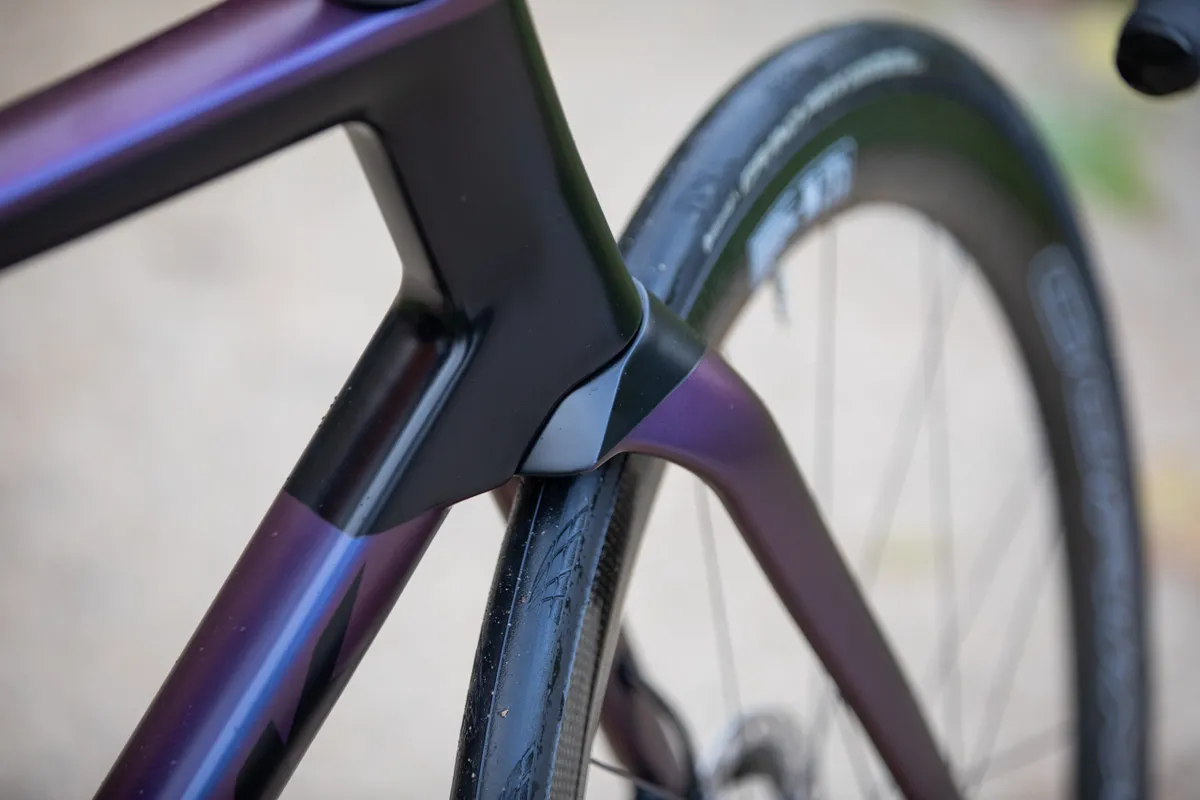
Like those bikes, the 795 Blade RS comes fitted with a carbon wheelset – from sibling brand Corima.
The WS EVO 47 Tubeless wheelset is pitched as an all-rounder racing choice, in line with the bike it's fitted to. It features Corima’s foam-filled rim cavity (said to bring a distinctive ride quality), and its 3K carbon weave construction.
The rims are 47mm deep, 21mm wide internally and 26mm wide externally. That’s a contemporary internal-width figure, without being especially progressive – although the rims are hookless.
This locks you into using a tubeless tyre – here, the choice of Continental’s GP5000 S TR is hard to better, but the 25c size choice feels a little old-school when wider 28c tyres are fast becoming the norm on race bikes.
I suspect, though, these are specced due to the relatively narrow external width of the rims. At just 26mm wide, a 25c tyre is likely the aerodynamically optimal choice, given that a smooth transition between the tyre sidewalls and the rim tends to be beneficial in this regard.
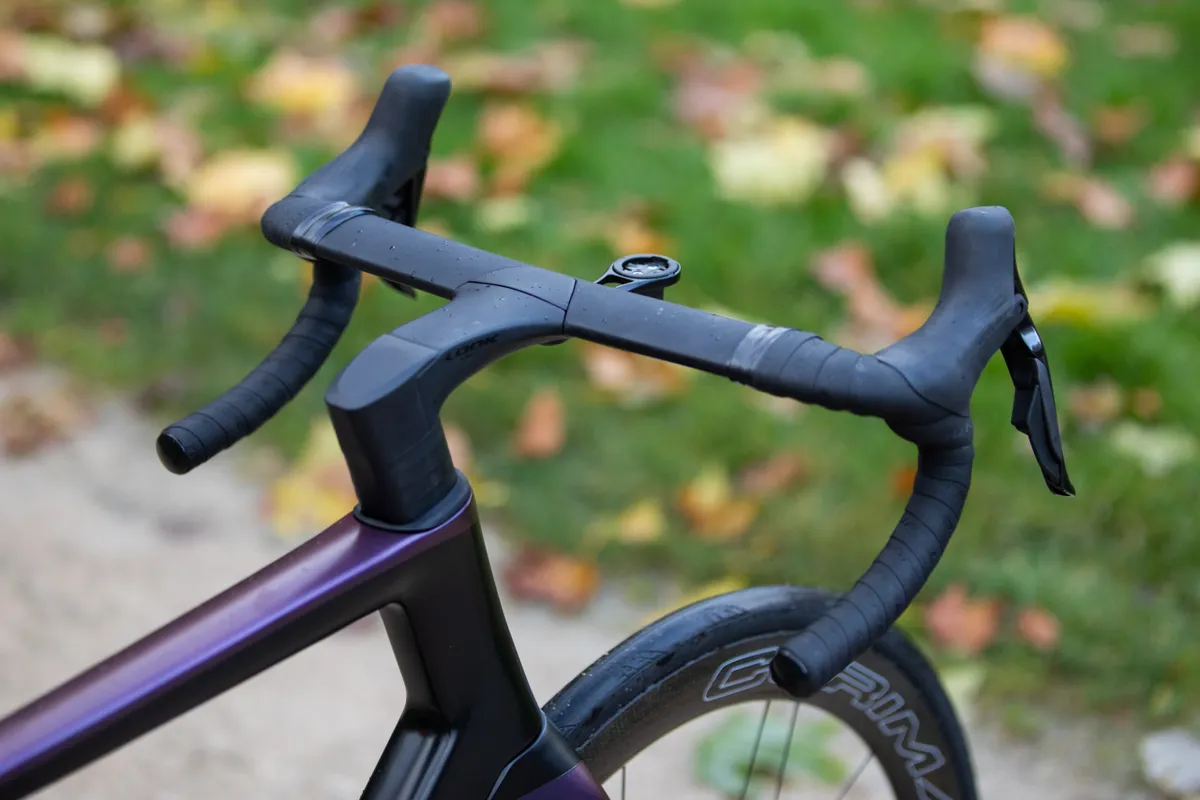
Though this may be a good way to save weight – because wider rims and tyres tend to be heavier, all else being equal – this somewhat old-school combination unhelpfully limits the amount of compliance available (as we’ll talk more about later).
The hubset uses Corima’s S EVO ratchet design, with carbon hub shells. All in, the wheels weigh a claimed 1,540g – contributing to the bike’s reasonably competitive 7.48kg total weight, including the supplied out-front computer mount.
The finishing kit includes the aforementioned Look cockpit and seatpost. The latter is topped with a Selle Italia SLR Boost Superflow saddle with carbon rails.
Look 795 Blade RS ride impressions
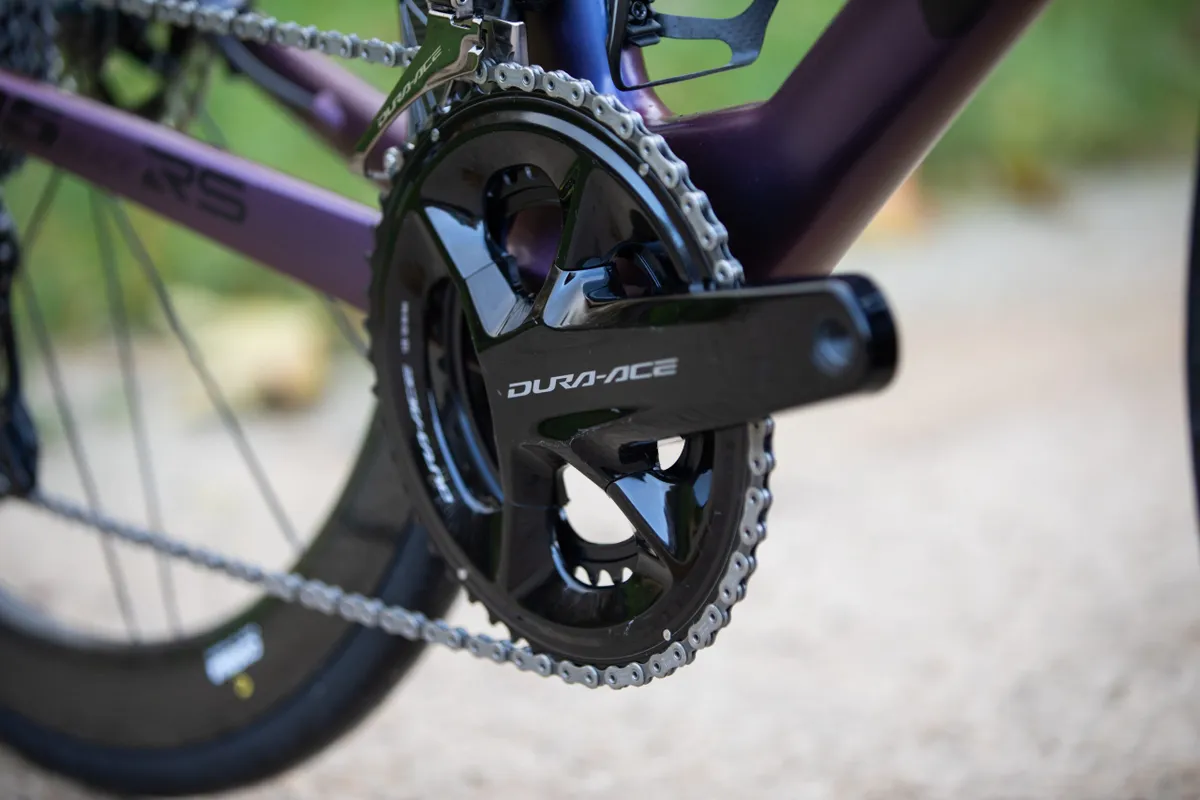
The Look 795 Blade RS delivers where it arguably matters most – it has all the hallmarks of a focused race bike.
It feels very fast on the flat, achieving the sense of effortless acceleration and ease of maintaining speed at a given power that you tend to find on dedicated aero bikes.
Of course, the bike is a little more ‘all-round’ in its approach now, akin to the Specialized Tarmac SL8, Ridley Falcn RS and ENVE Melee – it seems every bit as rapid as those bikes.
It feels notably rigid through the bottom bracket area, and whip-crack sharp when you get out of the saddle to sprint or push up a climb.
The handling also feels very light and nimble. It just manages to avoid the trap of being too light-touch – some bikes with steering as sharp as this can feel a little over-sensitive and border on twitchy. Here, when conditions are good, it feels spot-on in terms of balance.

However, the bike felt a little prone to buffeting in crosswinds. There are no tell-tale signs that the frame is especially susceptible to these (truncated aerofoil tube shapes are often chosen for their ability to shrug gusts of wind). However, the Corima rims are slightly angular in shape, as opposed to wider, more U-shaped rims, which is likely having an impact here.
Otherwise, the wheelset feels like a great foil for the frame – the pickup from the 36-tooth ratchet system feels solid, with the arrangement of components very stiff and efficient-feeling.
The ride position is aggressive without being overly so – the front is low and long, but it doesn’t feel as tucked-down and low-slung as the Ridley Falcn RS (a standout feature with that bike).
Taking the rough with the smooth
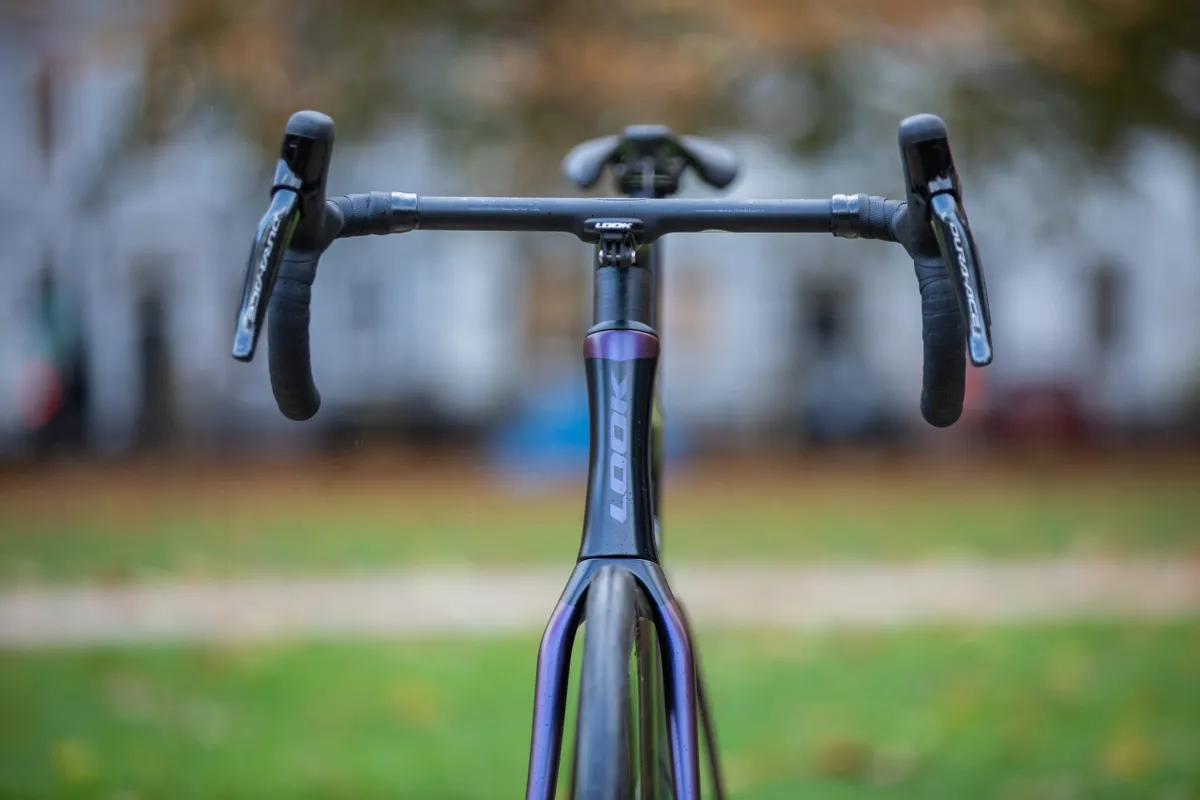
However, compared to any of the bikes I’ve mentioned in this review, the 795 Blade RS delivers the harshest ride quality.
The 25mm tyres are certainly playing their part here – while not long ago considered modern, brands at large are fast cottoning on to the fact that more volume, run at lower pressures, is generally more comfortable (and faster, to boot).
The tyres measure up a little wider than stated – 26.2mm at 80psi / 5.5 Bar, according to my Vernier calipers – which is more or less in line with the external rim width. In theory, this is good for aerodynamics, as mentioned earlier.
This is compounded by the rigidity of the cockpit, which feels uncompromisingly stiff when faced with pimply, broken tarmac.
Normally, on a given race bike, I’ll be wary of riding over poorer road surfaces, but here I found myself being shaken quite violently. This led me to bracing against the impacts, instead of releasing my grip slightly to help ‘absorb’ the bumps.
Remember, the steering is very light, so when I tried releasing my grip as I normally would, the 795 Blade RS felt a little uncontrolled underneath me.
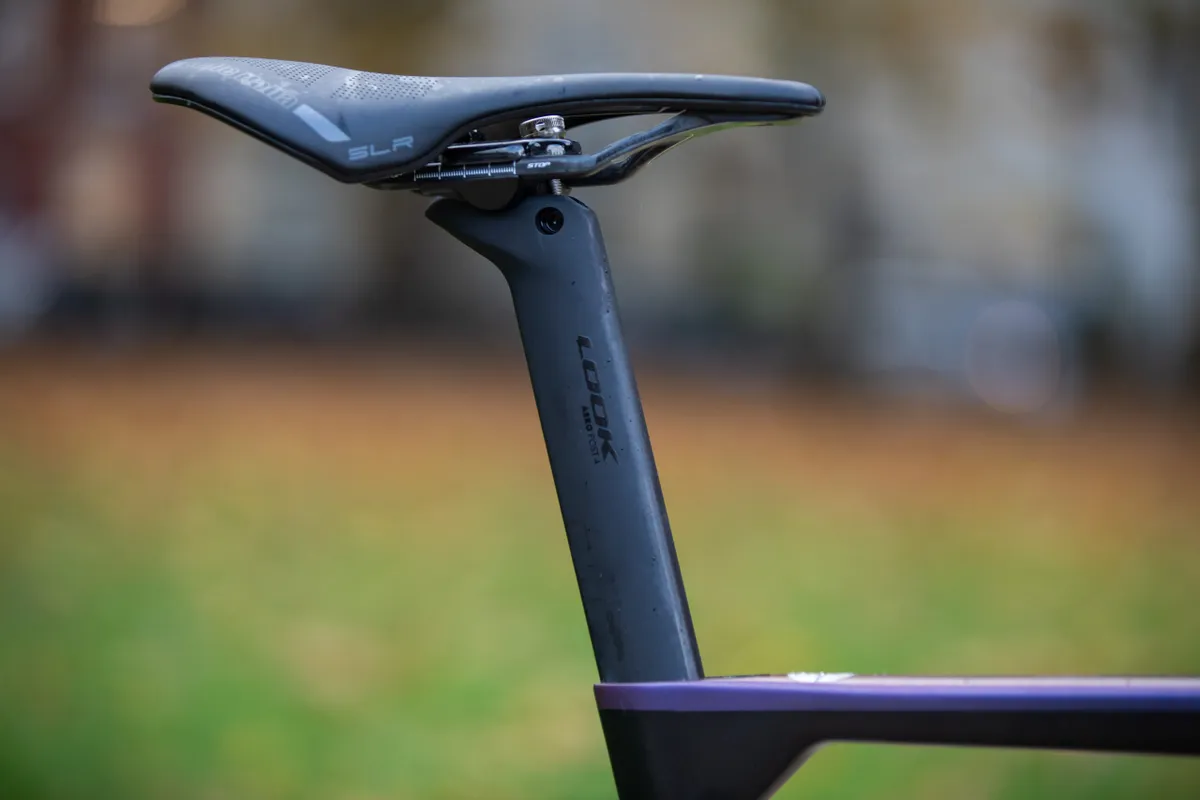
The seatpost (and resulting sensation through the saddle) is also very firm-feeling – it absorbs typical light road buzz reasonably well, but the jolting sensation as the rear tyre passes over significant crevices in the road is hefty.
In all, with my 80kg-plus weight taken into context, the end result was greater fatigue at the end of longer rides. I noticed I had more tension across my shoulders and neck, especially, despite the fact that the ride position was suitable for me.
I’m left with the distinct impression that the Look 795 Blade RS was designed and specced to excel on the smooth, well-paved roads professionals usually encounter.
The bike was developed with Team Cofidis riders, after all, with the aim of being as fast a race bike as possible. However, that means it could well be too finely honed to be as enjoyable as it could be for many potential buyers.
Look 795 Blade RS bottom line

The Look 795 Blade RS is incredibly stiff, light and downright fast.
In the right hands, in the right conditions (on smooth roads), it’s the broad equal of the latest tranche of the best race bikes money can buy today.
However, the experience is overshadowed by a harsh ride. Lighter and/or more skilful riders (such as many competitive racers) might fare better, but the narrow wheels and tyres are out-of-date spec choices, while the cockpit feels very firm.
The fact that, for the money, Look doesn’t include a power meter on a high-spec bike designed for racing, is also an oversight.
Product
| Brand | Look |
| Price | €9790.00, £9790.00, $11000.00 |
| Weight | 7.48kg |
Features
| Fork | Look 795 Blade RS, carbon |
| Stem | Look Combo Aero, carbon |
| Chain | Shimano Dura-Ace HG901 |
| Frame | Look 795 Blade RS, carbon |
| Tyres | Continental GP5000 S TR, 700x25c |
| Brakes | Shimano Dura-Ace Di2 R9200 |
| Cranks | Shimano Dura-Ace R9200 52/36t 12×2 |
| Saddle | Selle Italia SLR Boost Superflow, carbon rails |
| Wheels | Corima WS EVO 47 Tubeless |
| Shifter | Shimano Dura-Ace Di2 R9200 |
| Cassette | Shimano Dura-Ace R9100, 11-34t |
| Seatpost | Look Aeropost 4, carbon |
| Handlebar | Look Combo Aero, carbon |
| Available sizes | XS, S, M, L, XL |
| Rear derailleur | Shimano Dura-Ace Di2 R9200 12×2 |
